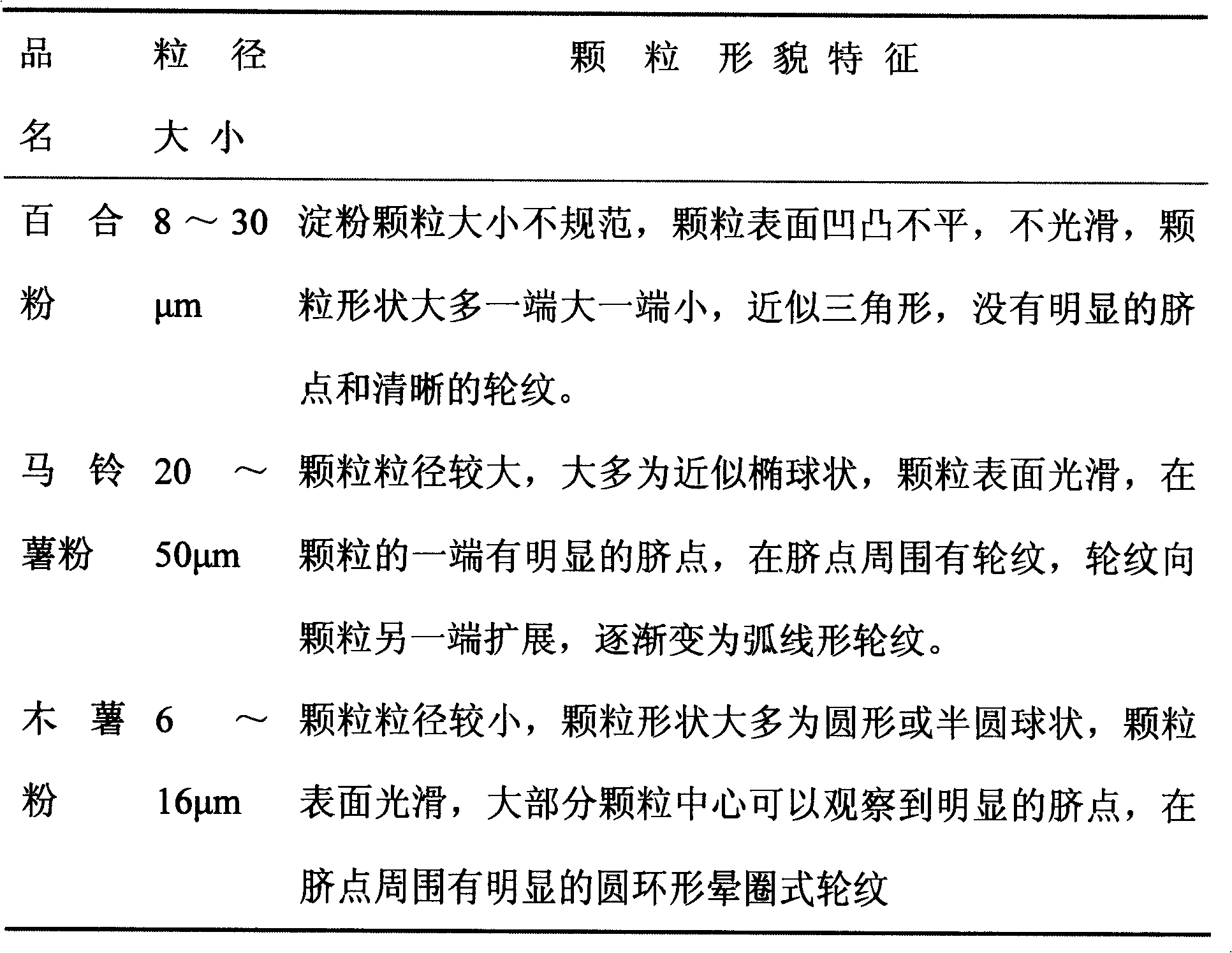Method for quantitatively discriminating true or false lily bulb powder
A technology of lily powder, true and false, applied in the field of identification of true and false lily powder, can solve the problems of high equipment requirements, high cost, complicated operation, etc., and achieve the effects of objective and obvious results, improved clarity, and low detection cost.
- Summary
- Abstract
- Description
- Claims
- Application Information
AI Technical Summary
Problems solved by technology
Method used
Image
Examples
Embodiment 1
[0015] Embodiment one: with pure lily powder, pure potato flour, pure cassava flour and lily powder doped with potato flour, lily powder doped with cassava flour as an example, distinguish different starch granules and calculate the adulteration rate, its operation steps are:
[0016] 1. Microscopic identification, the steps include:
[0017] (1) Weigh 1 gram of lily powder (cassava powder, potato powder) or 0.5g lily powder + 0.5g potato (cassava) powder in a beaker (the starches are all 300-mesh sieve starch), add 50 grams of water , and stir evenly; (2) Use a pipette to pipette 10 μl onto the glass slide, add 5 μl of Swiss dye dropwise and mix well to make about 1 cm 2 Allow to dry after smearing. (3) Magnify the dried smear by 100 to 400 times under a common microscope to observe and measure the size and morphology of the starch granules. (4) By comparing the morphological features of the tested lily starch granules with the morphological feature maps of various pure st...
PUM
 Login to View More
Login to View More Abstract
Description
Claims
Application Information
 Login to View More
Login to View More - R&D
- Intellectual Property
- Life Sciences
- Materials
- Tech Scout
- Unparalleled Data Quality
- Higher Quality Content
- 60% Fewer Hallucinations
Browse by: Latest US Patents, China's latest patents, Technical Efficacy Thesaurus, Application Domain, Technology Topic, Popular Technical Reports.
© 2025 PatSnap. All rights reserved.Legal|Privacy policy|Modern Slavery Act Transparency Statement|Sitemap|About US| Contact US: help@patsnap.com



